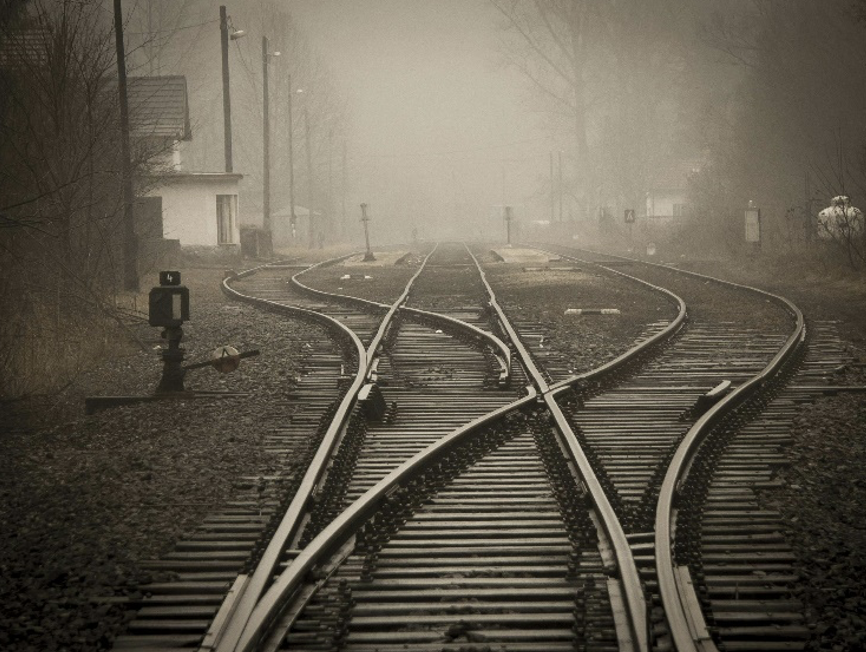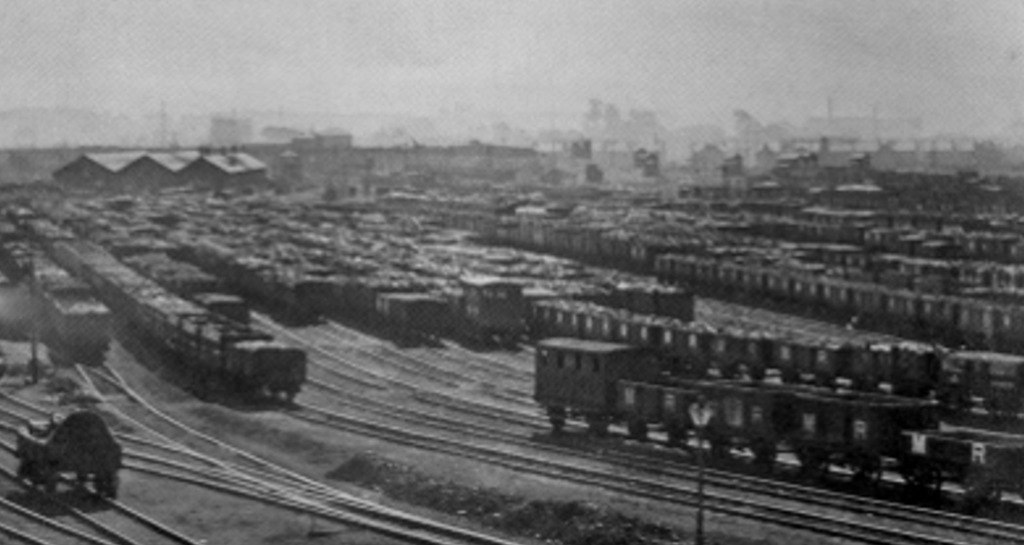Today’s post is by David Dixon, NAEE Trustee and author of Leadership for Sustainability: saving the planet one school at a time (Crown House Publishing, 2022). David is Tynedale’s Bicycle Mayor. As usual with our blogs, the views expressed are not necessarily shared by the Association.
I often travel by a train which takes me through Peterborough Station. On sidings just outside three stored snow plough wagons are stored. These get put at the front of locomotives to clear blocked lines. They can’t have been used much in recent years due to Climate Change induced mild winters (but I digress). The thing about them that has always intrigued me is that each one has a prominent notice painted on the chassis which says ‘No Hump Shunting’. Each time I’ve seen this I thought to myself ‘what does that mean?’ and then get distracted and forget all about it until I see them again. This time I was determined in a spoddy fashion to get to the bottom of it.
Having ‘Ecosiad’ what Hump Shunting is (Ecosia being preferable to Google because it plants trees for each search you make and also supports environmental projects worldwide), a whole new world of past sustainability practices opened up from which we can learn much going forward. Hump shunting was invented to help railway companies compile freight train trucks more efficiently into categories of goods and/or destinations having received them from disparate places. For example, if London needed a train of fruit, then a group of fruit trucks would be put together in a siding that may have originated from many other places (a siding being a length of track with a dead end where freight trains would be built up before being hooked up to large locomotives and taken to their destinations). You would need lots of these sidings literally side by side so that the sorting process could go ahead. Smaller ‘shunting’ locomotives would be used to move the trucks into the correct place. If you’ve ever read any of the original Thomas the Tank Engine stories by the Reverand W. Awdry, you will know all about this (and it betrays my vintage). In these stories all the locomotives hate shunting trucks because they are tetchy and invariably cause trouble in the manner of naughty children (sorry I digress again).
The problem with using small locomotives for shunting is that it takes a long time and uses lots of fuel. To get over this conundrum the ingenious Hump Shunting was invented. This involved building a network of sidings which sloped slightly towards their dead ends and which linked via ‘points’ (points being a junction where a siding was linked to adjacent sidings and a truck or chain of trucks could be diverted from one to another by the pull of a lever. This pivoted a piece of track – the points – ensuring a smooth diversion). You can see points at the approaches to large stations where trains can be allocated particular platforms according to availability.
Stock photo with permission from Pixabay
The reason for building the sidings on a slight slope was that instead of using so many locomotive movements to create the trains, gravity did it for nothing. However, it was a skilled job in controlling the points and also the speed of the wagons so that they didn’t run away and crash. To begin with it needed men to run alongside the wagons and apply brakes when needed. This was a very hazardous job and led to may serious accidents. Eventually a technical solution was invented, whereby there was a controller in a special signal box who could apply a break via the track itself. It was a special section of rail which could rub against wagon wheels to slow them down. The slope of the track was created by having a slight hump at the top of each siding hence the name Hump Shunting (also known as ‘Loose Shunting’). I suppose the snow ploughs I saw were unsuitable for this sort of shunting, possibly because they were so heavy and would never be part of a conventional line of wagons anyway.
Photo courtesy of SSL
Hump Shunting ceased in the UK around 1995 as the use of container wagons increased which needed a different loading system. But what has this got to do with sustainability?
Before the onset of mass logistics on our road systems, there was an equivalent one on the railways. Tens of thousands of trucks transported every type of product around the country. This was possible because of the large number of branch lines that reached nearly every community. Even highly perishable goods such as vegetables, meat and dairy products could be moved swiftly to towns and cities from the countryside. My grandfather was a signalman who worked on the Hull to Leeds line. I remember as a child being invited into his signal box and told that he was about to let the ‘milk train’ through. Presumably it had priority because of the need to get it to its destination quickly. I’ve visited heritage lines in recent years and seen the vestiges of the rail network which managed to deliver goods from far flung places to population centres very efficiently. If you ignore the free wi-fi on rail journeys and look out of the window, you can spot the remnants of lines which at one time would enter factories and industrial estates so that trucks could be loaded with manufactured goods, or for components and raw materials to be offloaded. Like vast cycle racks outside factories, these have been consigned to history.
As freight and the transport of people moved inexorably onto the roads, many of the branch lines were deemed ‘uneconomic’ and were closed in the 1950s and 1960s. The purge of these lines was made notorious by the cuts made on the recommendation of Dr Richard Beeching, Chairman of the British Railways Board, to the Transport Minister, at the time, Earnest Marples. Like tram and waterway networks, it seems that these more sustainable transport babies were thrown out in the bathwater of individualism and the accompanying ‘drive’ (pun intended) to greatly expand the road network between and within urban areas. The economics supporting this was biased in that the resulting emissions (including embodied emissions associated with car and lorry manufacture and road building) and the profligate use of land were effectively outsourced to the environment, whilst the potential savings of all these through rail transport were never in the equation. I wonder what would have happened if New Economics had been in place post 2nd World War? We would have needed to replace the coal burning locomotives, but could have modernised the rail network over time to retain its ability to provide logistics and mass passenger transit with far less detrimental effects on the environment.
Hump shunting still takes place in some European countries and perhaps it will make a come-back in the UK even though many of the sidings have been replaced with industrial and housing estates. I always think that such hidden history is worth discovering because it can reveal a lot about where we are today and to make us question if all ‘modern’ initiatives are actually fit for purpose. Increasingly what modernism has deemed as progress is just the reverse if the benefits of it aren’t equitable or have adverse effects on the biosphere.
Getting back to Thomas the Tank Engine, I found its various iterations through the decades also tell us a lot about where our economy and society have ended up. The early editions were printed in England, then this moved to Italy and now they’re printed in China. Quite rightly some of their content has been revised; for example, the coaches are no longer compliant females being dominated by male locomotives. The early editions tell a story of a lost culture which has bowed to economic globalisation and no longer values the Commons as exemplified by public transport and local solutions. So, lets celebrate Hump Shunting and learn from its history. Some practices need revisiting if we are to avoid the worst environmental effects of ‘Growth’ and ‘Progress’.
………………………..
David can be contacted at: daviddixon649@gmail.com


